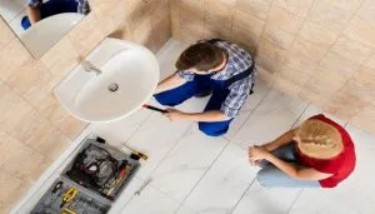Maintenance of the Hydraulic System
Maintenance of the Hydraulic System
Checklist for maintenance of the plumbing system
We pride ourselves in repair work and providing premium quality plumbing maintenance. Nonetheless, we also understand that many people perform plumbing maintenance themselves. For this reason, we have put together a checklist for home plumbing maintenance that you can carry out to make sure that everything is working properly. So, without further delay, here is the checklist for maintenance of the hydraulic system:
Piping maintenance checklist
- Check your entire home for leaks.
- Test all your shut-off valves for water supplies and under some plumbing systems (such as toilets and dishwashers).
- Look out for signs of corrosion. Corrosion on copper pipes will be bluish-green. The corrosion will be rust-colored (it is rust, after all), for galvanized steel pipes. It is a harbinger of leaks to come, while corrosion itself is not a sign of problems.

Checklist for maintenance of drains, taps and sinks
- Check your drains for bubbling or slow drainage. Any of these issues are signs of a clogged drain and should be fixed as soon as possible.
- Clean the sinks to avoid future blockages.
- While you’re under the sink, you may also want to check for any visible signs of leaks. Even something as seemingly harmless as a small buildup of moisture around the pipes can mean a leak.
- If you have a garbage disposal, follow the maintenance instructions included in the user manual. Even if you don’t have the manual, you can still clean your garbage disposal by inserting a few ice cubes made of white vinegar into the system and turning it on.
- Check the faucet aerators and shower head for debris. Tap aerators are the small screens that fit on the end of the taps and are usually easy to unscrew by hand.
Heading
- Inspect the caulking and seals around the tub, shower, sink, and toilet. If the caulking looks dry, cracked, or in some way peeling off, accordingly, scrape off the old caulking and apply new liquid silicone.
- Try shaking the toilet (gently). If it moves, therefore, check the mounting bolts located at the bottom of the toilet and near the back. If these are tight and the toilet still moves, you may need the help of a professional to reassemble the toilet on the flange.
- Speaking of toilets, remove the tank lid from all the toilets in your home and check for signs of damage.
- Examine the washing machine hoses for cracks or visible signs of brittleness. Make sure that all connections are secure and that the surrounding area is dry and free of excess moisture.
Water heater maintenance
- Check the water pressure using a pressure gauge. Ideally, the water pressure should be between 40 and 65 PSI (pounds per square inch).
- Wash the water heater and replace the anode rod every year.
- Make sure the pressure relief valve and the temperature relief valve on your water heater are working.
- Find out the positions of the main water shut-off valve, waste water cleaning and test them annually to make sure everything is as it should be.